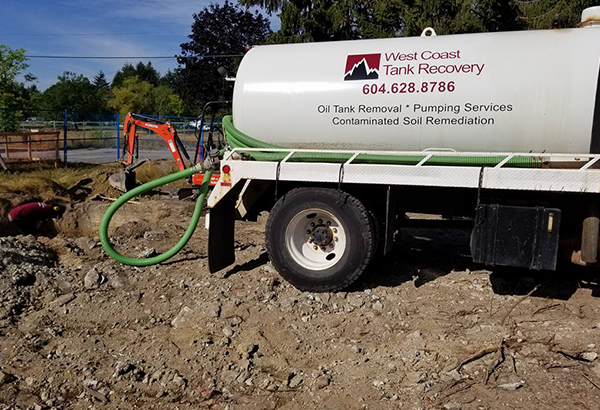 Fully Licensed and Insured
Fully Licensed and Insured Request an Oil Tank Scan
Request an Oil Tank Scan Request a Free Estimate
Request a Free Estimate

If you have recently discovered an abandoned underground oil tank on your Metro Vancouver property, you may be feeling overwhelmed by all the steps needed to deal with this problem. One of the most important steps to tackle if the tank has corroded or leaked into the surrounding soil is the process of soil remediation. Contaminated soil can cause a litany of health hazards to not just the surrounding flora and fauna, but also to you and your family if the contamination has reached groundwater or the air. Here’s what you need to know about soil remediation services so you can safeguard your family and your property.
Decades ago, many homes in Vancouver and the Lower Mainland were constructed with oil-based heating systems that required massive metal tanks full of oil to be buried underground. This fed a system of pipes that would subsequently heat the home. These systems are no longer common and have been replaced by newer, more sustainable, less dangerous technologies. However, with little to no regulation concerning the decommissioning of these systems, many oil tanks were simply shut off and left underground. Unfortunately, over time, the metal tank can rust and corrode, leading to the oil and sludge inside seeping into the surrounding soil and groundwater. This can cause immeasurable health concerns for the humans, animals, and plants that occupy the surrounding area of the leaking tank. Because this type of contamination can be complex, it’s best to seek out soil remediation services from a professional to ensure the old tank is safely removed and the soil is either removed or restored to a healthy and clean state.
Tank removal is a process unto itself. As for the surrounding soil, testing is an essential first step. Soil testing in a laboratory is an important first step so that you and whomever you’ve hired for soil remediation services know what you’re dealing with. This can also help you establish the borderlines of the contamination and the extent of the damage. Testing is sometimes an ongoing process as the soil is remediated or removed to determine when the area has been sufficiently cleaned and the work is complete. There are a few different methods for soil remediation depending on the level and type of contamination involved. Biological treatment, soil washing, soil stabilization, and chemical oxidation are some of the methods for treating contaminated soil. When it comes to soil contaminated by a leaking oil tank, here at West Coast we often recommend removing the contaminated soil and transporting it to a treatment facility or a dedicated landfill. Regardless of the remediation method chosen, it’s essential to work with a professional to avoid costly mistakes and dangerous health hazards.
Once the tank and contaminated soil have been removed, and further testing indicates the borders of the area are clean, backfilling can begin. The homeowner can work with their remediation contractor to determine the best soil and drainage base to backfill with. Various factors will affect this decision such as the existing soil in place, the quality of drainage, the slope of the area, and desired purpose for the surface area.
Abandoned oil tanks can wreak havoc on a property and the health of its inhabitants and surrounding ecosystem. If you’ve found a leaking oil tank under your home, trust an expert in soil remediation services here at West Coast Tank Recovery to safeguard the health of your property and your loved ones.